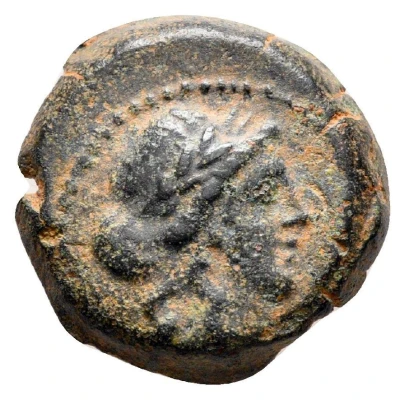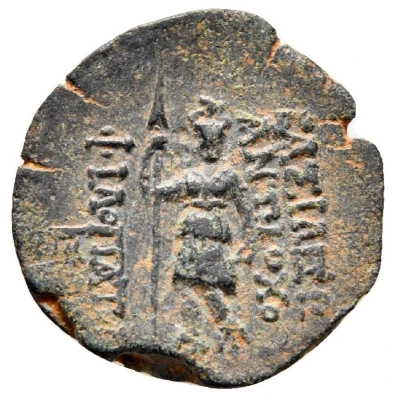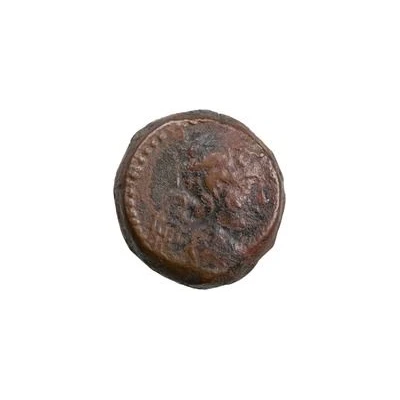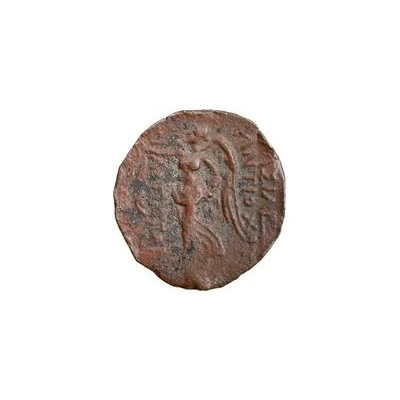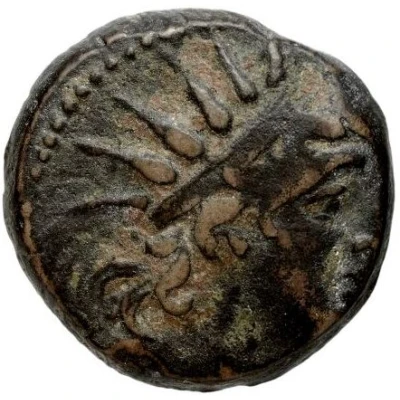
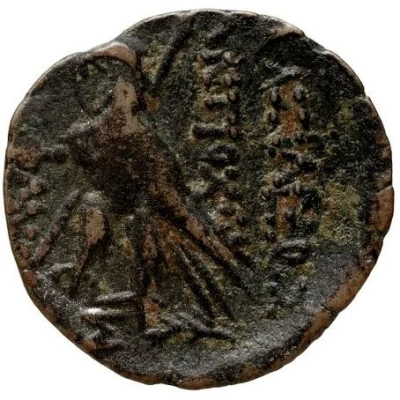

© Bibliothèque nationale de France / Gallica
Dichalkon - Antiochos VIII Antioch 200-202 113 BC - 111 BC
| Bronze | 5.2 g | 18 mm |
| Issuer | Seleucid Empire (Seleucid Empire (305 BC - 64 BC)) |
|---|---|
| King | Antiochos VIII Grypos (125 BC - 96 BC) |
| Type | Standard circulation coin |
| Years | 200-202 (113 BC - 111 BC) |
| Calendar | Seleucid era |
| Value | Dichalkon (1⁄24) |
| Currency | Drachm |
| Composition | Bronze |
| Weight | 5.2 g |
| Diameter | 18 mm |
| Shape | Round (irregular) |
| Technique | Hammered |
| Orientation | Variable alignment ↺ |
| Demonetized | Yes |
| Updated | 2024-10-10 |
| Numista | N#427453 |
|---|---|
| Rarity index | 95% |
Reverse
Eagle standing left, scepter in background, date/control mark in exergue.
Script: Greek
Lettering:
ΒΑΣΙΛEΩΣ
ΑΝΤΙΟΧΟΥ
ΕΠΙΦΑΝΟΥΣ
Translation: King Antiochos (VIII Gryphos) Epiphanes
Comment
Antiochos VIII Grypos (125-96 B.C.), second son of Demetrios II Nikator and Cleopatra Thea. Place on the throne in 125 B.C. by his mother, who put to death his eldest brother Seleukos V in order to have the power in her own hands. He poisoned his mother in 120 B.C. and carried on war for some years with his brother Antiochos IX Kyzikenos. In 112 B.C. the two brothers agreed to share the kingdom between them: Antiochos IX Kyzikenos ruling Coele and Phoenicia, Antiochos VIII Grypos all the other provinces. Grypos was assassinated in 96 B.C..
Interesting fact
One interesting fact about this coin is that it features a unique blend of Greek and Persian influences in its design. The obverse side of the coin depicts the bust of Antiochos VIII, while the reverse side features a seated Apollo, a common deity in Greek mythology, but with a distinctly Persian-style throne and decorations. This fusion of cultural elements reflects the multicultural nature of the Seleucid Empire, which spanned across much of the ancient Near East and brought together diverse peoples and traditions.
